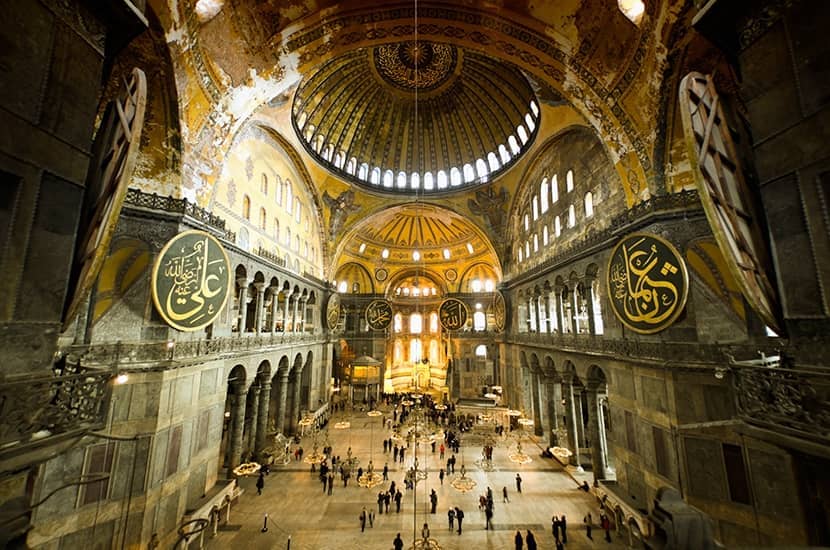A Presbyterian minister, a Pentecostalist pastor and a Sunni imam come to worship in the same place. It’s not the start of a joke: this is literally what happens at my local church in east London which, strangely, now encompasses a mosque. It was in danger of being closed, but instead the walled church complex has been partitioned, with a chunk of it sold off to Muslims while the main church building remains the home of two different Christian denominations. The site serves as a sanctuary for followers of rival creeds, a kind of suburban Temple Mount.
The shared use indicates an unlikely chapter in the life of a once-renowned institution, founded in 1642 when Protestant nonconformists met in Stepney amid civil war. The then Wycliffe Chapel ministered to generations of poor east Londoners. But since relocating to Ilford, the congregation has dwindled to about two dozen parishioners. The other churchgoers who meet there are followers of a black pastor, who struggles to fill the pews. There’s no trouble filling the mosque, with queues stretching to the end of the street on Fridays.
The conversion of churches into mosques, potentially a radical reconfiguring of our urban geography, has yet to receive any serious attention. The National Churches Trust reports more than 2,000 church closures over the past decade — a period in which weekly church attendance decreased by a fifth — but it’s unknown how many of these buildings are now mosques.

But even if there are just a few, the historical symbolism is immense. In conflicts between Christendom and Islam, usurping enemy places of worship marked the consummation of conquest. Byzantium was definitively lost when the largest church in the world, Hagia Sophia, became a mosque in 1453. The bitterness of that memory still endures, and flared up last year when President Recep Tayyip Erdogan controversially reclaimed Hagia Sophia for Muslim worship, drawing criticism from the US secretary of state, Mike Pompeo, Pope Francis and various Orthodox church leaders.

Many mosques in former churches are run by Sufis, mystics particularly dedicated to the Virgin Mary
The use of former churches here in Britain for Muslim worship has not become a flashpoint between Christianity and Islam in the same way. An online petition against this trend, lodged to parliament in 2013, secured just three signatures (out of a target 10,000) and attempts to stir up outrage have failed. Most Christians would probably recognise that the problem is secularisation, not Islamisation. The British Social Attitudes Survey has charted the decline of Christians in the UK from a majority in 1983 to little more than a third today. Most Britons now identify with ‘no religion’ and view faith negatively, two-thirds regarding religion as a cause of conflict in society.
Muslims would rather churches resound with Christian worship (praised for its sincerity in the Quran) than see so many in the pitiful state that secular trends have left them, with developers eyeing them up for profitable ends. Churches are being turned into luxury flats, nightclubs and — in one case I’ve seen — a Tesco Express. That’s if they’re not erased altogether, as many were during the 1960s when town planners demolished countless 19th-century churches, replacing them with car parks and shopping centres.
Such desecration was not the handiwork of Muslims, who make up 6 per cent of the population. On the contrary, Muslims have been respectfully preserving the original spiritual function of places of worship deemed no longer useful by those who have voluntarily sold them off. What is true of such buildings is equally true of the values they for so long embodied. For those Christians who mourn the loss of religious values — the emphasis on family, on the sanctity of life and, increasingly, our stewardship of nature — Muslims can be seen as allies and bulwarks against some of the effects of secularisation. Anyone who goes anywhere to worship God is now a member of a tiny and oft-maligned minority.
The spiritual heart of my community of Bengali Muslims lies in east London’s Brick Lane, centred on an 18th-century Huguenot chapel that has long housed a mosque, having been a synagogue before that. Engraved in Latin above the entrance are the words Umbra Sumus (‘We are a shadow’), which might have been lifted straight out of the litanies of this mystically inclined mosque. Elsewhere, in the mosque that was formerly St Mark’s, Camberwell, Muslims worship beneath Gothic arches and a vaulted ceiling; the building even retains stained-glass windows depicting Jesus and his disciples. Another church-turned-mosque, in Cricklewood, has adapted an onion-shaped dome on to its spire to form a minaret.
It is no accident that many mosques situated in former churches are run by Sufis, mystics particularly dedicated to the Virgin Mary, who is invoked more frequently in the Quran than the Bible. When the convent of St Ann in north London was acquired by an influential Cypriot Shaykh, it was simply re-christened St Ann’s Mosque, since Saint Anne — Mary’s mother — is also revered by Muslims.
To live among Christians has auspicious antecedents in Muslim tradition. My ancestor, according to legend at least, was Mohammed’s uncle Jafar, who engaged in history’s first recorded dialogue between Christians and Muslims, at the time refugees in 7th–century Ethiopia. The Christian king, the Negus, listened to Jafar recite the tale of the Nativity in its charming Muslim version, where Jesus is born not in a manger but under a date palm and proclaims himself the servant rather than the son of God. Hearing this, the Negus, moved to tears, reportedly drew a line in the sand and said the gulf between the two faiths was no larger than that.
If this decade sees the closure of another 2,000 churches, as looks likely, it’s time to ask what should become of them. There are now charities set up to save them, to keep them open for the community even without a congregation. That’s an option. But if that can’t be done, then Muslims would certainly rather a house designed to worship God stayed that way. Christians may think the same. In a fast-secularising society, the People of the Book should focus on the fact that worshippers of all religions are treading different paths up the same mountain.





Comments